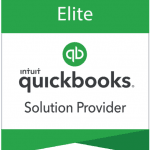If you plan to sell online, you’ll obviously need a way to accept credit and debit cards. There are a couple of different ways to accomplish this, but Intuit (maker of QuickBooks software) offers merchant processing services that can integrate with common e-commerce platforms like Web.com, Go Daddy, IA Modules, UltraCart, PDG Software, and Homestead. This gateway will enable you to accept Visa, MasterCard, Discover, and American Express.
Payment Gateways Explained
First, a quick explanation: There are two main ways to accept cards through a website. The first, which is easier but more expensive, is a payment processing company (PPC). The two examples probably most familiar to most people are PayPal and Google Checkout. What is actually happening is that the PPC is accepting the credit card payment itself and then forwarding the funds to you. This eliminates any need to set up a gateway, because the PPC already has one.
The other way, which is less expensive but more complicated, is a payment service provider (PSP), also known as a payment gateway. Think of the gateway as a virtual credit card terminal, an electronic version of the one sitting by a cash register in a retail store. Many PSPs offer a couple of other services that are also necessities for online selling: shopping cart software and an Internet merchant account. (You must have a merchant account authorized for online transactions, and standard accounts are not.)
Setting up a payment gateway will be challenging (at best) and downright impossible (in most cases) if you’re not a programmer. In Intuit’s case, it has “built-in” or “off the shelf” compatibility with major e-commerce platforms. If you are not using one of those platforms, you can still use QuickBooks Merchant Services, but the payment gateway will have to be integrated with your website.
Integrating a Payment Gateway into an E-Commerce Site
This takes a programmer. Gateway integration is typically accomplished with XML. There are initial steps to link the gateway with your website systems. It’s then necessary to ensure correct coding for sign-on, card authorization, and funds capture routines. Dizzy yet?
There are two ways to approach this, then. One is to choose a standard e-commerce platform compatible with the QuickBooks payment gateway and have the integration taken care of for you. The other is to have the vendor that is setting up your site handle the integration as part of that process.
As far as which is preferable, that really depends on your business. Some e-commerce businesses will do just fine with a “prepackaged” site. Others, however, do need to have a custom site designed from the ground up. Just keep in mind that either way, you can utilize the QuickBooks payment gateway.
Are you looking to Integrate a QuickBooks Payment Gateway into Your E-Commerce Website?
If so, give us a call at 866-949-7267. With close to 20 years in the payment integration arena, we can answer the tough questions, narrow down your options, and help you choose the best way to integrate based on your needs. In a few short steps, we can have your business set up to accept payments online and have the whole process integrated to sync with your QuickBooks accounting software.


















